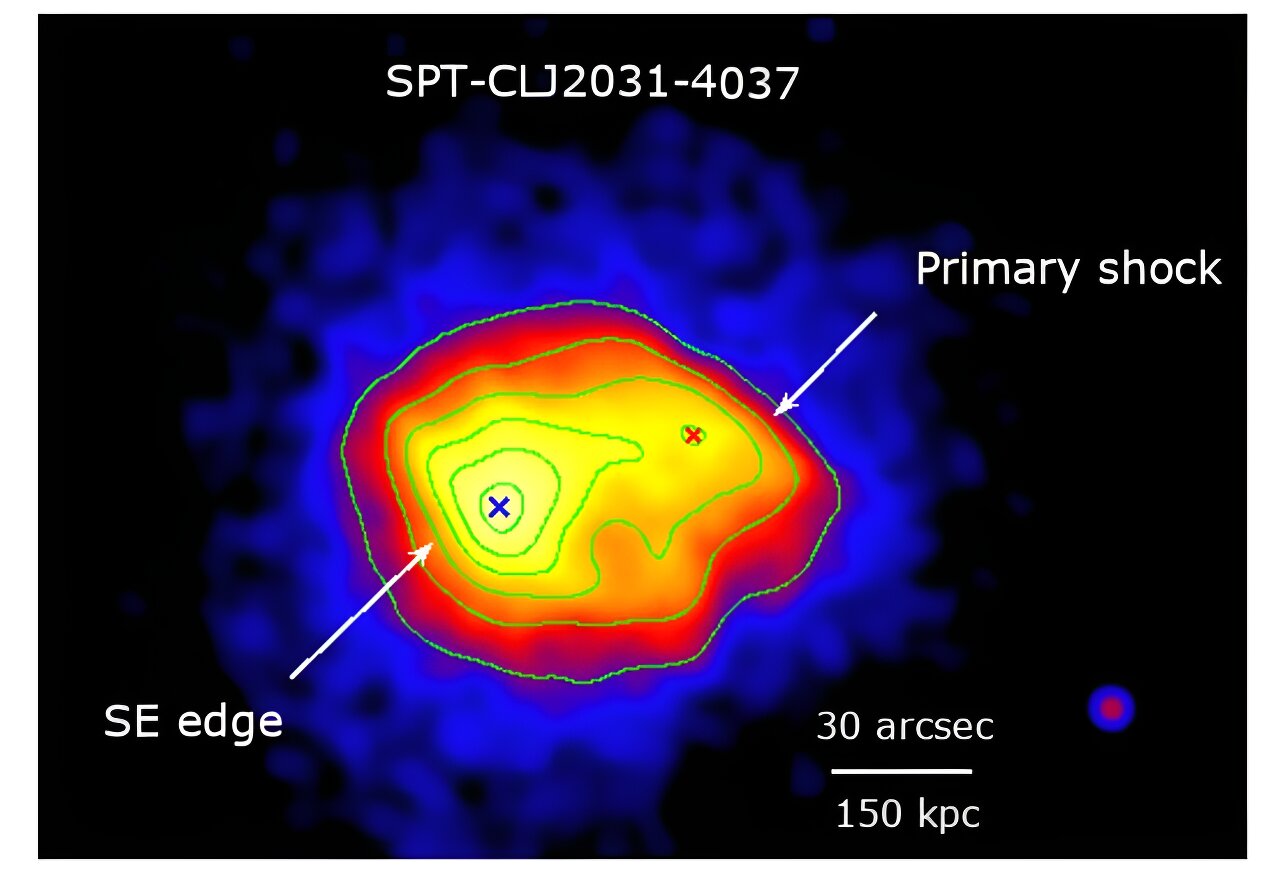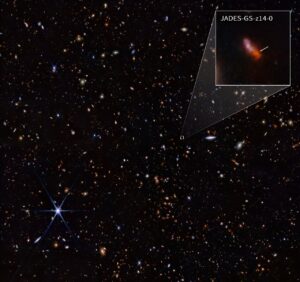Exposure-corrected image of SPT J2031. Credit: Diwanji et al., 2024
Using NASA’s Chandra X-ray spacecraft, astronomers at the University of Alabama in Huntsville have observed a merging galaxy cluster known as SPT-CLJ 2031-4037. They found a rare strong shock front in this galaxy cluster. The finding is reported in a research paper published June 27 on the preprint server arXiv.
Galaxy clusters are formed by the hierarchical merging of smaller clusters and contain up to thousands of galaxies bound together by gravity. They are the largest known gravitationally bound structures in the Universe and can serve as excellent laboratories for studying galaxy evolution and cosmology.
Galaxy cluster mergers are the most energetic events in the universe since the Big Bang. Some of the kinetic energy released during these mergers is dissipated into the intracluster medium through shocks and turbulence. So-called shock fronts, seen as sharp breaks in X-ray brightness and temperature, give astronomers a rare opportunity to observe and study such merging systems and their geometry.
SPT-CLJ 2031-4037 (or SPT J2031 for short) is a merging galaxy cluster at a redshift of 0.34. It is a massive system with an estimated mass of about 800 trillion solar masses and an X-ray luminosity of 1.04 quattuordecillion erg/s.
A team of astronomers led by Purva Diwanji of the University of Alabama conducted a search for shock fronts in SPT J2031 using the Chandra X-ray Observatory.
“SPT J2031 was observed by the Chandra Advanced CCD Imaging Spectrometer (ACIS) detector in Very Faint (VFAINT) mode for a total of 256 ks spread over 10 observations,” the researchers wrote in the paper.
The observation allowed the team to detect two shock fronts in SPT J2031 – the stronger one in the northwest and the weaker one in the southeast (the southeast edge). The stronger shock front has a density jump of 3.16 across the sharp edge of the surface brightness and a Mach number of 3.36, while the weaker one has a density jump of 1.53 and a Mach number of 1.36.
The paper’s authors emphasize that the discovery makes SPT J2031 one of the rare merging systems with a Mach number above 2.0. They note that only a few merger shock fronts with such a high Mach number have been detected by Chandra.
The study also found that SPT J2031 exhibits a merger geometry and that the post-impact electron temperature of the stronger shock front is lower than the temperature predicted by the instantaneous shock heating model and favors the collisional equilibrium model. These findings are consistent with results provided by previous studies.
More info:
Purva Diwanji et al, A rare, strong shock front in the merging cluster SPT-CL J2031-4037, arXiv (2024). DOI: 10.48550/arxiv.2406.19264
Log information:
arXiv
© 2024 Science X Network
Quote: Astronomers observe strong shock front in galaxy cluster SPT-CLJ 2031-4037 (2024 July 3) Retrieved July 4, 2024 from https://phys.org/news/2024-07-astronomers-strong- front-galaxy-cluster .html
This document is subject to copyright. Except for any fair dealing for the purposes of private study or research, no part may be reproduced without written permission. The content is provided for informational purposes only.



